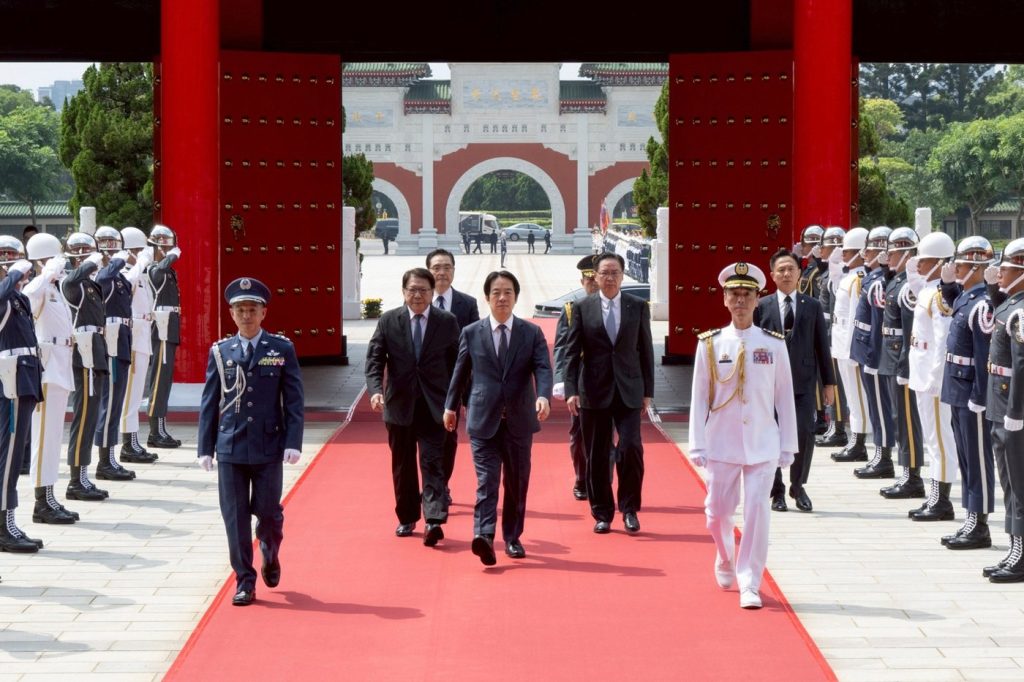BANGKOK (AP) – Taiwan introduced a new civil defense handbook on Tuesday, which is designed to be more user-friendly while emphasizing the urgent need for civilians to prepare for potential crises, particularly in light of possible Chinese military aggression. This updated version was released by the All-out Defense Mobilization Agency and includes checklists and questions intended to assist residents in formulating comprehensive plans for different emergencies, such as military invasions and natural disasters, especially given Taiwan's susceptibility to earthquakes.
According to Shen Wei-chih, the director of the All-Out Defense Mobilization Agency, the necessity for a revised handbook was underscored by the recent Russia-Ukraine war. He stated, “Since the outbreak of the Russia-Ukraine war, we have felt that much more information needs to be added. Today’s new edition of the National Defense Handbook is about how to enhance and raise public awareness of crises, as well as strengthen the ability for self-defense.”
In terms of geopolitical context, Taiwan’s status as a self-governing island claimed by China has become increasingly precarious. Tensions have soared in recent years as official communications between the two sides have deteriorated. China has intensified its military presence around Taiwan, increasing the frequency of Coast Guard patrols and conducting extensive military exercises that simulate a blockade of the island.
The People’s Liberation Army (PLA) of China has been sending military aircraft and naval vessels towards Taiwan daily. An alarming report from Taiwan’s Ministry of National Defense indicated that from Monday to Tuesday alone, 24 military planes, including fighter jets and drones, along with 11 naval vessels and six other Chinese ships, transited towards the island.
In response to this escalating threat, Taiwan's government, under President Lai Ching-te of the Democratic Progressive Party, has placed greater emphasis on the role of civilians in defending against potential military incursions. The new handbook is part of these efforts to cultivate a civil defense culture among the population.
The 36-page guide contains practical advice such as checklists for preparing emergency evacuation kits and strategies for different crisis scenarios, including how to identify the sounds of air raid and tsunami sirens. An online version offers additional resources, such as links to applications that provide information on emergency shelter locations and instructional videos for various emergency situations. Recommendations include packing essential items like drinking water, sleeping bags, raincoats, and a week's supply of canned food, toilet paper, and pet food in preparation for any crisis.
The handbook also addresses military threats, warning of scenarios where “non-friendly actors” may conduct live-fire drills near Taiwan or declare a no-fly zone under the guise of military exercises.
The updated handbook, while retaining much of the advice from earlier versions, has been simplified for easier comprehension. Colonel Chiao Fu-chun, a spokesperson for the Defense Ministry, noted, “We drew on the approaches of France and Norway, and after multiple rounds of discussion and consultation with experts, we completed this handbook. It is expressed through simple text and images, making it easy for people of all ages to understand.”
This government initiative exemplifies a broader movement within Taiwan to acknowledge the critical role civilians must play in any potential defense scenario. Additionally, civil society has been actively engaged in preparing for such threats in recent years. Puma Shen, the founder of Kuma Academy, has recently launched civil defense courses with significant support from businessman Robert Tsao, who pledged 1 billion New Taiwan Dollars (approximately $32 million) to assist with these preparations.










